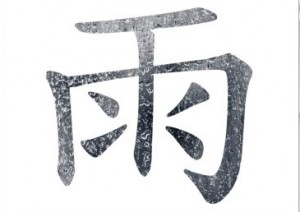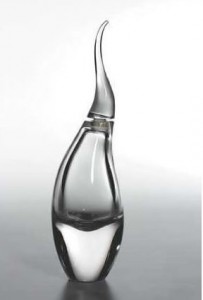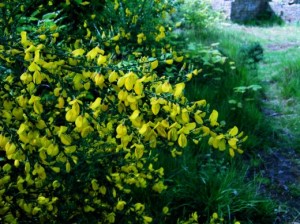As much as I love perfume there are just some things I hear about that I never expect to have the opportunity to try. For exclusivity’s sake is the most common reason I have for not getting to try something I want to try. Every once in a while it is because of the price. In 2007 the fragrance company Mane released a fragrance under their own imprimatur called Yu (Mandarin Chinese for rain). It was a limited edition of 500 bottles for an eye-popping $5,000. Now usually once perfume starts reaching these kinds of price points I stop aspiring to want to try them. Mane Yu was different because of one simple thing there was a technology piece to the process that really had the intersection of perfumista and science geek all revved up.
The perfumista part of me was excited because the brief given to Mane perfumer Cecile Krakower was to capture “the rain in the South of France on a warm July day.” Never having been in France for that particular experience my early years in South Florida had created a fondness for the smell after a hard rain on a warm day. Now I’m sure this brief has been given to other perfumers but Mme Krakower was being given a new tool to accomplish it. This is the point where I turn into Sheldon from “The Big Bang Theory” and get science geeky. Mane had created a portable extraction system called Jungle Essence. By using a mixture of pressure and solvent Mme Krakower could go to the source of the notes she wanted and extract them at the height of their natural aromaticity. She would only need to harvest what she needed and if this was a true technological advance it should provide a special experience for perfume lovers, who have an extra $5,000 in pocket change.
This led to a number of the ingredients in Yu being harvested this way before Mme Krakower would blend them together. The thing is you can smell the difference between the notes in Yu from the Jungle Essence process and the more traditional notes extracted in less technological ways. Is Jungle Essence a breakthrough because it can harvest notes at the peak of their olfactory orbit? Or is it access to rare and difficult to source ingredients that the portability of the Jungle Essence method allows, the advance? These and many other questions were finally answered for me because I finally was able to get a small sample of Mane Yu to try for myself. What I found was a fragrance more interesting for the pieces instead of the whole.
The opening of Yu shows the promise of the Jungle Essence extraction method as bergamot, tangerine, orange flower, and Asian Mandarin leaf Jungle Essence are the top notes. This is a mostly citrus slightly floral opening but the mandarin leaf sticks out because of how lifelike it is. If you’ve ever smelled a citrus grove after the sun has come out after a thunderstorm that is what this mandarin leaf smells like. Slightly watery, softly green and wholly alive. It livens up everything around it but it doesn’t necessarily play well as it sort of sticks out as different and that experience would recur throughout my enjoyment of Yu. Freesia Jungle Essence leads the way to the heart of three notes extracted by the Jungle Essence method; champaca, jasmine, and broom. Champaca, freesia, and jasmine seem slightly better but it is the broom which really shows off what a difference the Jungle Essence can make.
The broom note comes off grassy, floral, and hay-like all at once. My favorite fragrance which features broom is Santa Maria Novella Ginestra. That broom note, in Ginestra, compared to the broom note in Yu feels like a distant echo. I felt like I was lying on a sun kissed hill side in a field of broom. This is where science geek and perfumista, both, were at harmony. The base takes the final two Jungle Essence notes rosewood and vetiver and mixes them with Mysore sandalwood and bourbon vanilla. Here is where Yu perhaps shows that it is the quality of the ingredient and not the technology as it is the Mysore sandalwood that is the star of the late going. That is not to say that, in particular, the rosewood does not show something more than I’m used to experiencing in other fragrances.
Mane Yu has excellent longevity and above average sillage for a $5,000 fragrance.
Since 2007 technology has hurtled along and we’ve seen both Pierre Guillaume in his Huitieme Arts line and Thierry Mugler Womanity use new extraction techniques to find new olfactory experiences for us to appreciate. When it comes to Mane Yu is the juice worth the squeeze? Probably not but it is a fascinating bit of perfumery and if you really want to try something different I encourage you to get a sample like I did and see what you think of this expensive perfumed experiment.
Disclosure: This review was based on a sample of Mane Yu purchased from The Perfumed Court.
–Mark Behnke, Managing Editor





